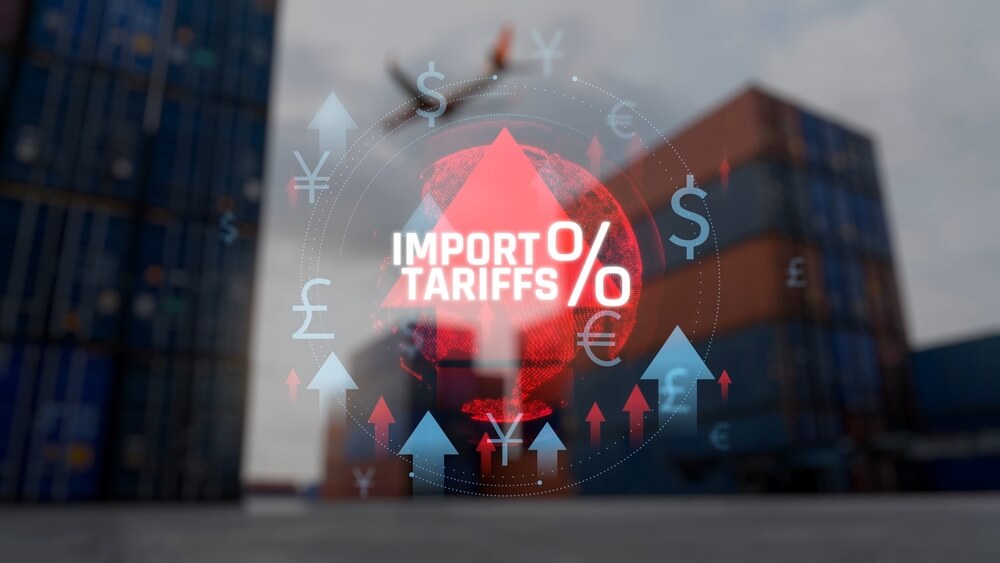Key Takeaways
- Customer touchpoints are unified with omnichannel fulfillment, which benefits business operations—through the integration of sales channels—and meeting customer demand with greater convenience.
- Omnichannel fulfillment differs from “multi-channel fulfillment,” which manages each sales channel separately.
- Two core benefits of omnichannel fulfillment are seen with improved efficiency and enhanced customer experience.
- Implementation challenges also exist due to technical complexities and cost of robust IT systems.
- Effective omnichannel fulfillment requires business to leverage appropriate software and effective strategies (e.g., buy online and pick up in store “BOPIS,” ship-from-store, drop shipping, and third-party logistics “3PLs.”
What is Omnichannel Fulfillment?
The fulfillment of customer orders from multiple sales channels, like online stores, physical retail outlets, mobile apps, and third-party marketplaces, all through a centralized system is called Omnichannel fulfillment. This practice ensures that customers can purchase from a brand through multiple methods while having smooth and consistent experience. Simply put, this allows a customer to buy a product online and pick it up in-store or place an order from their mobile device and return the item at a physical location—meeting customer demand in real time. The integration of systems such as inventory management, order tracking, and customer service allows businesses to meet customers where they are, without disruption or friction.
The Difference Between Multi-Channel and Omnichannel
Multi-channel and omnichannel strategies handle backend operations differently, but they both involve selling through multiple platforms. Multi-channel fulfillment independently manages each sales channel. That means inventory, order processing, and customer service for an online store are separate from those of a physical retail location. This can lead to inefficiencies, duplicate processes, and inconsistent customer experiences.
On the other hand, omnichannel fulfillment unifies these channels. A single system, enabling real-time data sharing and coordination across platforms, manages inventory and orders. A customer can, for example, see if an item is in stock at a nearby store while shopping online, and opt to pick it up rather than wait for delivery. This integration makes the overall experience faster, smoother, and more reliable.
The Benefits of Omnichannel Fulfillment
To significantly enhance both customer satisfaction and operational performance, Omnichannel fulfillment offers a range of benefits. Most importantly, it improves the consumer’s overall shopping experience. When customers can choose how and where they shop, receive products quickly, and make hassle-free returns, their trust in a brand grows. This flexibility is especially important in today’s competitive retail environment.
Inventory management is stronger under omnichannel fulfillment. Real-time data across all channels allows companies to avoid problems like overselling, understocking, or delayed shipments. As a result, businesses can reduce storage costs and increase turnover rates. Furthermore, omnichannel fulfillment helps tap into additional sales opportunities. By offering options like buy online, pick up in-store (BOPIS) or same-day delivery, businesses can attract more customers and reduce cart abandonment.
Finally, companies gain a competitive edge by leveraging proximity and availability when using omnichannel fulfillment. This allows stores to function as mini warehouses to ship nearby online orders quickly, which can shorten delivery times and lower shipping costs as evidenced in the growth of micro fulfillment centers following the COVID-19 pandemic.
The Challenges of Omnichannel Fulfillment
Implementing omnichannel fulfillment presents notable challenges, despite its many advantages. Its technical complexity is one of the most significant challenges. Integrating multiple systems such as inventory management, CRM platforms, and shipping logistics requires robust IT infrastructure and careful planning. If not properly managed, this can lead to data silos or system incompatibility.
Another challenge is inventory accuracy. It’s crucial to have real-time updates since all channels draw from the same inventory pool; otherwise, customers may place orders for out-of-stock items. High upfront investment is another barrier for many businesses. Developing the right system architecture, training employees, and adjusting operational workflows can be resource-intensive.
To navigate the evolving complexities of demand forecasting, advanced analytics are required to gain insight into consumer behavior across different platforms and make appropriate inventory adjustments. Finally, managing returns can strain the system, especially when customers expect to return items across any channel, regardless of where they made the original purchase.
How Omnichannel Order Fulfillment Works
Through a unified order management system (OMS) that coordinates customer orders, omnichannel fulfillment is able to operate smoothly. The OMS system collects and evaluates orders from all the sales channels and determines the most efficient way to fulfill them. It could involve shipping from a central warehouse, a third-party logistics partner, or even a nearby retail store.
Evaluating real-time inventory visibility begins the process. To ensure accurate availability, the OMS accesses stock data across all fulfillment locations. Once an order is placed, it is automatically routed to the optimal location based on criteria like proximity, shipping cost, and inventory levels.
The order is then selected, packed, and shipped by the fulfillment team—or, prepared for in-store pickup if the customer prefers. In order to maintain a seamless experience, customers receive tracking information and updates throughout the process. Returns and exchanges are also processed through this unified system, ensuring stock levels are adjusted accurately and promptly.
Omnichannel Fulfillment Best Practices
Businesses should focus on a few key practices to achieve successful omnichannel fulfillment. Outdated information can result in missed sales or disappointed customers, so keeping inventory data synchronized in real-time is essential. A robust OMS that connects to all sales and fulfillment points helps to accomplish this.
Smart order routing rules are important to implement as well. They prioritize fulfilling orders from appropriate sources, geographically and thinking about costs, too. For instance, shipping from a nearby store may be cheaper and faster than from a central warehouse.
Another crucial role is employee training. How to support an integrated fulfillment strategy, managing inventory, and handling returns are just a few things that the staff across all departments need to understand. Ensuring brand consistency across all channels—through packaging, messaging, and customer support—helps reinforce trust and familiarity. Finally, predictive analytics can help businesses anticipate demand and optimize stock levels, reducing waste and improving delivery times.
Omnichannel Fulfillment Strategies
To enhance omnichannel operations, a variety of strategies need to be implemented depending on business goals and resources. BOPIS, one popular approach, allows customers to buy online and pick up their order in-store. This not only saves on shipping but also drives foot traffic into physical locations.
Shipping directly from retail stores is another strategy. Businesses can cut delivery times and balance inventory across locations by turning store stock into fulfillment inventory. Some brands use drop shipping to have suppliers ship products directly to customers, reducing the need for warehousing. Partnering with third-party logistics providers (3PLs) can also help expand capabilities without building new infrastructure.
Omnichannel Fulfillment Example
A leading example of a retailer that successfully implements omnichannel fulfillment is Target. Customers can shop however they prefer through Target’s integrated website, mobile app, and physical stores. Many of Target’s stores act as mini fulfillment centers, enabling faster and cheaper shipping.
Customers can conveniently take advantage of curbside pickup options, check product availability at their nearest location, or choose same-day delivery on selected products. Sophisticated backend systems ensure real-time inventory visibility and efficient order routing, which provides flexibility for both Target and the customer. As a result, Target has improved customer satisfaction and operational efficiency, while also increasing overall sales volume.
Omnichannel Fulfillment Software
Businesses rely on a suite of specialized software tools to manage the complexity of omnichannel operations. OMS programs like NetSuite or Salesforce Order Management enable centralized tracking and smart fulfillment routing. Warehouse Management Systems (WMS) like Manhattan Associates or Fishbowl streamline inventory handling and logistics inside fulfillment centers. Notably, with:
- Retail Point-of-Sale (POS) systems: To help bridge the gap between online and in-store transactions (e.g., Shopify POS or Lightspeed).
- Shipping platforms: To automate logistics, label generation, and real-time tracking (e.g., ShipStation and EasyPost).
- Customer Relationship Management (CRM) platforms: To enhance personalization and service quality (e.g., HubSpot and Zoho).
Companies should prioritize integration capabilities, scalability, real-time data synchronization, and strong analytics tools to support decision-making when choosing appropriate software and systems.
Frequently Asked Questions
What makes omnichannel fulfillment different from multi-channel fulfillment?
Back integration. Multi-channel fulfillment treats each sales channel—like online, in-store, or mobile—as separate entities, thus managing inventory, orders, and customer service independently. This practice often leads to inefficiencies and inconsistent customer experiences. Alternatively, omnichannel fulfillment unifies all sales channels through one centralized system that allows real-time data sharing and coordinated operations.
What are the main challenges businesses face when implementing omnichannel fulfillment?
The implementation of omnichannel fulfillment can be complex and resource-intensive. These challenges include:
- Technical complexity with the integration of various systems (e.g., OMS, WMS, CRM, shipping).
- Inventory accuracy as real-time synchronization across all channels is essential.
- Considerable upfront costs are required to build robust IT infrastructure and complete requisite staff training.
- Difficulties with demand forecasting as advanced analytics is required in order to avoid over- or understocking.
What software tools are essential for successful omnichannel fulfillment?
Effective omnichannel fulfillment is achieved through a suite of integrated software solutions seamlessly synchronize essential systems, such as:
- Order Management Systems (OMS) for centralized order tracking and routing.
- Warehouse Management Systems (WMS) to manage logistics and stock handling.
- Point-of-Sale (POS) systems to connect in-store and online transactions.
- Shipping platforms to automate shipping, tracking, and labeling.
- Customer Relationship Management (CRM) tools for personalized service and support.
Companies striving to optimize their supply chain operations and control costs depend on durable, lightweight iGPS plastic pallets for all their shipping needs. For more information, contact us at 1-800-884-0225, email a specialist at switch@igps.net, or visit our contact page.



